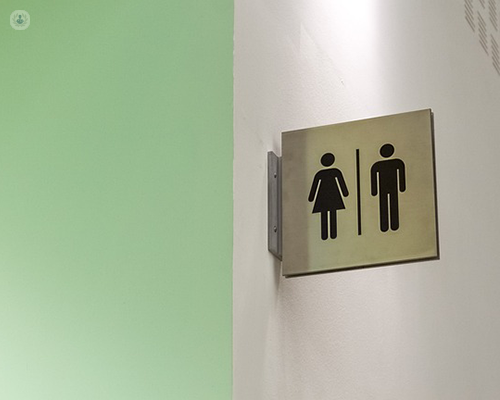Urinary incontinence: An expert guide
Autore:In this detailed article, highly respected consultant obstetrician and gynaecologist Mr Constantin Durnea sheds light on the key risk factors associated with urinary incontinence and how the problem can affect women in the period following childbirth. The revered specialist also shares his expert insight on the different forms of urinary incontinence and the most common approaches to treatment, as well as guidance on beneficial lifestyle modifications.

What are the different types of incontinence and their causes?
Urinary incontinence is considered any accidental or involuntary loss of urine from the bladder. However, there are different types of incontinence, the major two being:
- Stress incontinence, due to weakness in the muscles locking the exit from the bladder, otherwise called the bladder neck
- Urgency incontinence, caused by increased bladder tone, which increases the pressure of urine to the extent that it can pass through a strongly closed bladder neck
Stress incontinence occurs with coughs and sneezes, as well as physical effort or movement. On the other hand, urgency incontinence happens when urine leaks with a sudden feeling of an intense urge to urinate - in other words, when you feel you need to go to the toilet and don’t make it on time.
What causes incontinence?
The risk factors for stress urinary incontinence (SUI) include:
- age
- childbirth, especially vaginal birth, although caesarean section is not one hundred per cent protective against this risk
- increased pressure in the abdomen due to persistent constipation or cough, heavy lifting, obesity or pregnancy
- some connective tissue disorders such as Ehlers-Danlos syndrome
- postoperative complications after a hysterectomy
The risk factors for urgency urinary incontinence (UUI) include:
- smoking
- drinking too much fluid, alcohol or caffeine
- not drinking enough fluids, as the urine becomes concentrated which can irritate the bladder causing overactivity
- urinary tract infections (UTIs)
- constipation
- neurological conditions, such as Parkinson's disease or multiple sclerosis
What can be done to resolve urinary incontinence after giving birth?
There are some temporary changes occurring in the body during and after childbearing which are induced by hormonal changes and breastfeeding.
Tissues can become waterier and stretcher and it may take from three to six months for this to come back to normal after delivery. Usually by this time, incontinence symptoms will have improved in the majority of patients. However, there are some additional steps the patient can take to help their body recover more quickly, including:
- drinking at least 1.5 litres of fluid a day
- eating a high fibre diet
- avoiding drinks containing alcohol or caffeine
- avoiding spicy foods
- stopping smoking
- avoiding heavy lifting
- performing regular pelvic floor exercises
- bladder training – a special technique which helps increase bladder capacity
- using a large tampon or vaginal devices to compress the urethra during physical activity
If the symptoms are not improving or continue to persist after three to six months, you should discuss this with your doctor. You may benefit from a referral to a physiotherapist or some treatment with medication may be initiated.
Is breastfeeding a factor in incontinence recovery following childbirth?
Breastfeeding alone does not cause urinary incontinence. However, it does delay the return of hormonal levels to those of pre-pregnancy. As a result, it may take a bit longer for incontinence symptoms to improve spontaneously.
What medication is available?
There is no type of tablet for stress incontinence which is licensed for long-term use. The mainstay of initial treatment is pelvic floor exercises, followed by vaginal pessaries compressing the urethra and finally, a surgical operation.
There are also medicines used for urgency incontinence which work by relaxing the bladder muscle and accordingly increasing its capacity. This, in turn, decreases urinary frequency and urgency.
What does surgical treatment for incontinence entail?
There different types of surgical treatments: from injection of gel into the water pipe as a thirty-minute, day case procedure to open or keyhole surgery which can last from three to four hours. The best type of procedure in each case is determined according to the individual’s relevant factors as not every operation is suitable for every patient.
Recovery after a small procedure takes just one or two days while patients may need six weeks to recuperate from major surgery.
If you are concerned about urinary incontinence and wish to schedule a consultation with Mr Durnea, you can do so by visiting his Top Doctors profile.


